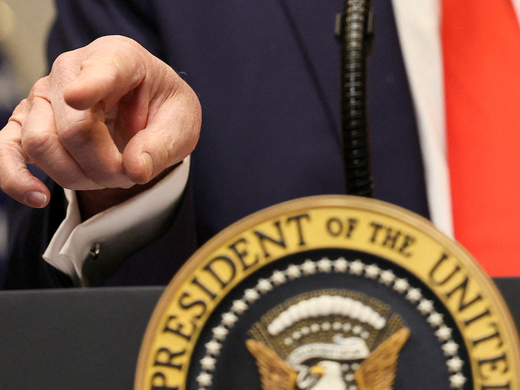The Long-standing Conundrum
Two recent developments in global trade point to the long–standing conundrum of regional trade agreements operating within the multilateral trade order centred at the World Trade Organization (WTO).
First, an agreement to create the Trans-Pacific Partnership (TPP) is once again said to be imminent, and the discussion around it is about what this means for the emerging economic order and the WTO (if — and despite President Obama’s deal with Republicans last week to obtain fast-track approval authority in Congress a big if — it were to actually happen).
On the emerging economic order, the defining phenomenon is the pre-eminence of the Asia-Pacific region in global economics, but also the not insignificant nuances around great power dynamics. China is expressly excluded from the initial TPP negotiating group on the grounds that its economy is too centrally planned to be part of such a far-reaching reform agreement (Vietnam isn’t excluded on these grounds). China, in turn, is promoting its own bloc, the Regional Comprehensive Economic Partnership. The impact all of this might have on the WTO-centred system is almost an incidental discussion.
Second, in December 1996, 29 countries signed on to create the Information Technology Agreement (ITA) to be used as the vehicle through which tariffs and other trade restrictions on items related to information technology (IT) would be brought to zero. Today, 80 countries representing 97 percent of global trade in IT items are signatories to this accord. In the middle of December 2014, negotiations to expand the ITA collapsed due to a dispute between South Korea and Taiwan, Province of China, on the one side and China on the other. The former two are major producers of liquid crystal display panels and so they wanted tariffs on these products reduced; China has a budding industry in this segment and so it opposed the tariff reduction.
This is not the first time China has sought to use trade policy to nurture its high-tech information sector. It had opposed an expansion of the ITA in 2013 as well. In November 2013, the United States and China agreed to eliminate tariffs (bilaterally) on about 200 items, not including the liquid crystal display panels. Effectively, the assumption among Chinese trade officials was that the agreement with the United States provided the outer bound to what it would be willing to concede in any other trade forum, including the multilateral ITA.
These episodes illustrate just how pervasive the influence of regional and bilateral trade agreements can be on the multilateral system. These incidents have become the tail that wags the dog. But, with about 585 notifications of regional trade agreements received by the WTO, of which over 375 are in force, the tail is a big and bushy one. Are regional agreements supplanting the WTO-centred multilateral trading system, or is a fruitful and mutually supportive coexistence still possible?
Regionalism within Multilateralism an Original Sin
The challenge of reconciling regionalism with multilateralism is an “original sin,” embedded in the processes that created the WTO. At Bretton Woods, the issue did not loom as large in the discussions concerning monetary matters or development and reconstruction. But in the trade arena, preferential colonial trade arrangements such as the Imperial Preference and its French equivalent were exempted from the Generalized System of Preferences for two reasons. The first was political. In the rivalry between the United Kingdom and the United States at Bretton Woods, granting the exemption for the Imperial Preference created the space for the US to extract concessions from the United Kingdom in other areas, mainly around the design of the International Monetary Fund (IMF). (The UK only fully abandoned the Imperial Preference in 1973, and then not because it favoured multilateralism, but because of its more recent regional commitment, membership in the European Economic Community.)
The second reason regional trade arrangements trumped the multilateral spirit at Bretton Woods was due to an intellectual gap in the understanding of trade theory at the time. It wasn’t until six years later that Jacob Viner (1950) would publish his seminal work, The Customs Union Issue, distinguishing between trade creation and trade diversion, thus advancing beyond the hitherto prevailing view that any reduction in trade barriers, even those that were not universally imposed, was welfare improving.
Article 24 of the General Agreement on Tariffs and Trade (GATT) thus acquiesces to the creation of regional trade arrangements so long as the common external tariff of the regional trade area is no higher than it was before the bloc was created.
Throughout the post-Bretton Woods period, regional trade agreements have been seen in a relatively benign light. This is partly for pragmatic reasons — it is widely understood that this sort of regionalism has political imperatives, almost every country indulges in it, and it can be “GATT compatible.” Therefore, there is no meaningful constituency to vehemently oppose it. But the indulgence is also grounded in the beliefs that:
- trade creation exceeds trade diversion in many regional trade areas; and
- regional trade agreements can be the “hothouse” within which experimentation and innovation can occur, to be scaled up to the multilateral level later.
Surely the numbers of actual and probable regional trade agreements cited above are indicative of something more than a lust for creativity among trade officials and politicians. The long and painful death of the Doha Round has dealt the multilateral process a serious blow, one underscored by the emergence of negotiations around the current two “mega deals,” the TPP and the Trans-Atlantic Trade and Investment Partnership (TTIP). Both cover significant shares of global trade and include several significant countries.
TPP and TTIP
The odds of either of these proposals reaching fruition, much less success, are still long. In the TPP, Japan and the United States have had to overcome traditional impasses over unsurprising issues — agriculture and automobiles. And it isn’t clear that they have been entirely overcome. If they have among the trade negotiators, blockages might still emerge domestically during the ratification and implementation stages. In the TTIP, a long list of vexing issues remains to be sorted out between countries with very different perceptions of economy and society. The BRICs (Brazil, Russia, India and China) are missing from both endeavours and, most importantly, the political path is still not clear for the US president to conclude and implement an agreement.
Still, it is worth considering what the implications of either agreement coming into force might be, if only because of the size and scope of each. Under current membership, the TPP group[1] accounts for about one-third of world trade, while the US-EU trade that forms the core of the TTIP amounts to another one-third. With two-thirds of world trade covered by two agreements within which the United States is the anchor, the implications for the current global trade order are two-fold.
First, the centre of gravity for trade negotiations will shift from the current equilibrium of expending long periods of time to negotiate small changes in the WTO system to acquiring and/or maintaining membership in one or the other mega-agreement.
The TTIP in particular heralds a “next generation” arrangement concentrated on investment and regulatory issues rather than traditional trade concerns. The WTO would be forced to operate at a different plane than it does currently, dealing with truly global issues rather than the mechanics of trade flows between countries (discussed further in the next section).
Second, the options for the countries outside of these agreements will be three-fold: marginalization; seeking to enter one or both blocs; or joining a (distinctly weaker, perhaps China- or Russia-centred) third bloc.
It remains to be seen if either agreement, particularly the TTIP, which is very much a US-EU enterprise, will be open to new entrants. This matters particularly for Canada and Mexico, who will be affected by the TTIP but are not present at the negotiating table. Not surprisingly, Canada is engaged in its own TTIP-like negotiation (the Comprehensive Economic and Trade Agreement), focused on investment and regulation rather than trade, with the European Union.
In short, regional trade agreements appear to breed more regional trade agreements, rather than a consensus to strengthen the WTO processes.
None of these is appealing except if one buys into the thesis that the enhanced provisions around intellectual property, investment and environment standards that characterize the TPP and TTIP discussions will lead to deeper and wider liberalization than anything a global round of talks is likely to deliver and that this is desirable. There is controversy over whether these provisions are development friendly. Based on the little, often leaked, information available about the provisions in the agreements, there is concern that access to medication and the room for states to operate in areas such as investment, environmental and labour management will be limited.
What the critics of the TPP and TTIP most hope for is that current impasses are fatal.
Multilateralism as the Operating System, and Coexistence with Regionalism
The size and complexity of the regional agreement ecosystem is vexing the WTO-centred multilateral trade system. However, there is still room for — indeed a need for — a multilateral system that not only coexists with its numerous regional cousins but also complements and reinforces them. The elements of such a coexistence might be as follows.
- The global economic crisis is not over; indeed, it is becoming entrenched in the economic and political fabric of many countries. If the quantitative easing programs in the United States, Europe and Japan result in a currency war, then the WTO will have to insert itself into the macroeconomics and global finance domain, from which it has historically been absent. Although the WTO cannot influence how these programs play out, it has to be ready to respond to the short-term currency volatility and long-term currency misalignment that characterize global finance currently.
- A cold hard look at the “single undertaking” approach that has characterized multilateral trade negotiations since the start of the Uruguay Round in 1986 is in order. The current list of issues that might be tackled via the trade regime route is an impressive and daunting one, including the commercial dimensions of the Internet, intellectual property, investment, carbon pricing and technology transfer. Each deserves to be treated on its own merit, not unlike the imperative that drove the creation of the ITA
- More broadly, the WTO has to take the lead in rebuilding the constituency for multilateralism in trade. Here, the WTO might draw lessons from the IMF and World Bank, each of which have impressive training, research and outreach arms. Through these avenues, a global constituency for these institutions and the issues they work for has been built in ways that has not been the case for the WTO.
Underpinning all of this is the WTO’s dispute resolution system, which my colleague Paul Blustein describes as the “evergreen, perpetual benefit of the WTO.” It is a success. The number of cases brought to it and the range of countries using it speaks to this. The body of “case law” created here that is subsequently used in international and intra-national disputes in trade is growing.
Roberto Azevêdo, the current head of the WTO, likens the multilateral trade regime to that of the operating system of a computer, something that enables the machine to run all of its other facets. This is not a bad analogy. The global public good attribute of a functional multilateral trade regime is as germane today as it was in 1944, as are the very real threats to it. Managing coexistence is not just possible, but highly desirable.
Work Cited:
Viner, Jacob. 1950. The Customs Union Issue. Carnegie Endowment for International Peace. Reprinted in 2014 by Oxford University Press, edited and with an introduction by Paul Oslington.
Author’s Note:
An earlier version of this commentary was originally commissioned for the Council of Councils Seventh Regional Conference, and can be read here. The author would like to thank the participants of that conference and Domenico Lombardi, director of CIGI’s Global Economy Program, for his helpful comments on this revised CIGI Commentary.
[1] The countries in the TPP group are: Australia, Brunei, Canada, Chile, Japan, Malaysia, Mexico, New Zealand, Peru, Singapore, the United State and Vietnam.


